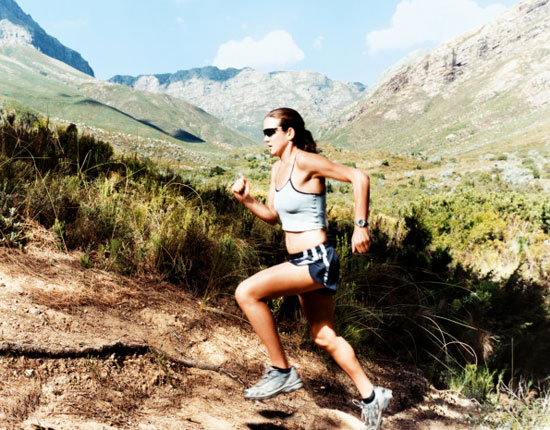Push Through The Pain
When the pain sets in on a run, reboot with these strategiesBy Christie Aschwanden
Change doesn’t happen in your comfort zone. “You need to push through discomfort to see performance gains,” says John Raglin, Ph.D. “But if all you’re thinking about are your sore feet and legs, your brain can produce a stress response that increases the ache.” Try one or more of the following mind tricks to keep your head in the game.
Give Yourself A Pep Talk
Recall a time when you topped your expectations. Positive self-talk can help improve your concentration.
Refocus Your Thoughts
If you’ve tried pushing harder and still can’t get your mind off your agony, try giving your brain a new task, such as naming all the prime ministers in order. This will keep your brain busy enough to suppress the stress response.
Look For Little Victories
Remind yourself that this sprint will be over in 30 seconds, or that in 10 seconds you’ll be at the top of the hill. Finding achievement from segments of a workout makes it easier to maintain intensity.
Use Your Imagination
In a race, picture yourself as a tiger hunting prey. Visualisation reroutes your mind away from your pain.
Find Your Rhythm
Try counting to eight over and over; concentrating on a rhythmic pattern is calming.
Trail Race Training Program
The 30-day guide to preparing for your first 10-K on the trail.Before you tackle your first trail race, there are three things you need to know:
2) Don't worry; it only takes four weeks to prepare your body to race a 10-K--the most classic trail distance.
3) Don't be a hero. Try to jump into a trail race without the proper training and--because your hips, ankles, and legs aren't used to the uneven ground and changing direction--there's a decent chance you'll hurt yourself. We tapped Ian Torrence, an ultramarathoner and trail running coach for McMillan Running, to outline a training plan with all the strengthening, balance exercises, and (gulp!) hill repeats you'll need to achieve your best time--and get home safely.
>>Check Out The Training Program
Trail Shoe Review
Trail Running Tips
World famous ultramarathon trail runner Scott Jurek lends all sorts of hints and tips about starting out with trail running, running uphill, posture and running style. >> Check Out VideosTreat Your Feet
Top tips to keep in mind when shopping for trail shoes. Runners World has put together a comprehensive article about purchasing trail shoes, which shoe for which type of running, what sort of shoe to look out for if your a virgin trail shoe shopper. The article also reviews individual models of shoe. >>Read More
Runners World Top Trail-shoe Tips:
- Reinforced toe bumper
- Flexible plate inside midsole for push through protection against rocks and other pointy trail obstacles
- Wider toe box to prevent stubbed toes and accommodate swelling feet
- Abrasion resistant upper to reduce side-impact bruising
- Knobby, grippy rubber outsole tread for running over rocks, roots, and muddy terrain
- Open mesh for maximum breathability
- Wide outsole footprint for optimal stability




No comments:
Post a Comment